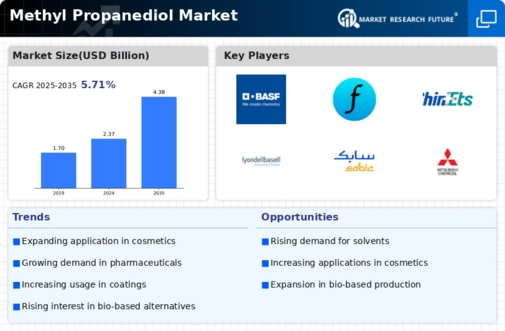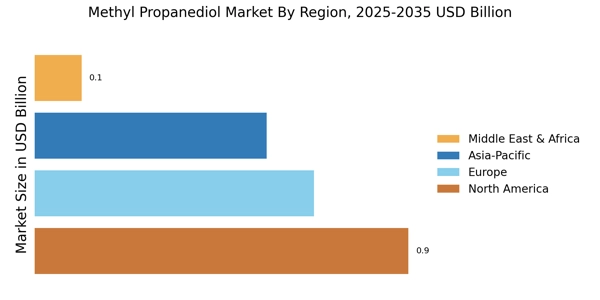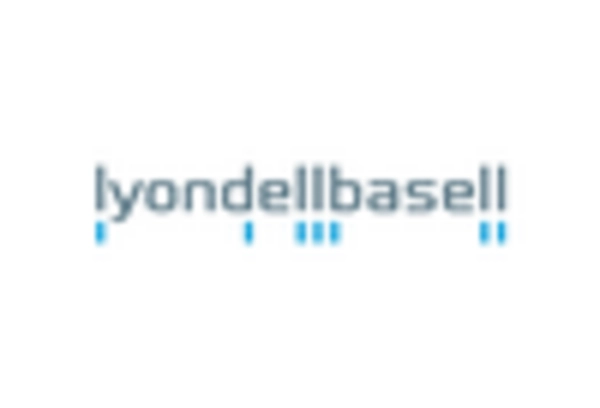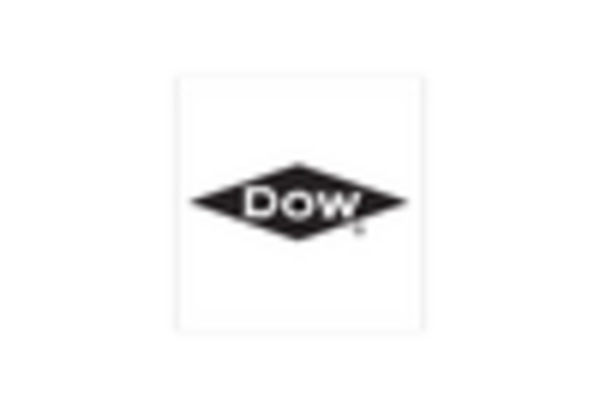Growth in the Pharmaceutical Sector
The Methyl Propanediol Market is poised to benefit from the expanding pharmaceutical sector, where this compound is utilized as a solvent and excipient in drug formulations. The pharmaceutical industry has been witnessing steady growth, with an estimated market size reaching over 1.5 trillion USD by 2025. Methyl Propanediol Market's role in enhancing drug solubility and stability makes it a valuable ingredient in various therapeutic applications. As the demand for innovative drug delivery systems increases, the Methyl Propanediol Market could see a corresponding rise in usage within this sector. This growth trajectory indicates a promising avenue for stakeholders involved in the production and distribution of Methyl Propanediol Market.
Technological Innovations in Production
The Methyl Propanediol Market is likely to benefit from ongoing technological innovations in production processes. Advances in manufacturing techniques, such as more efficient catalytic processes, are expected to reduce production costs and enhance product quality. This could lead to increased availability and competitiveness of Methyl Propanediol Market in various applications. Furthermore, the integration of automation and digital technologies in production facilities may streamline operations, resulting in higher output and lower environmental impact. As these innovations unfold, the Methyl Propanediol Market may experience a shift in dynamics, potentially leading to greater market penetration and expanded applications.
Increased Use in Industrial Applications
The Methyl Propanediol Market is also benefiting from its increasing application in various industrial sectors, including coatings, adhesives, and plastics. The Methyl Propanediol Market is projected to grow at a CAGR of around 4% through 2025, with Methyl Propanediol Market serving as a key ingredient that enhances performance characteristics. Its ability to improve the flow and leveling properties of coatings makes it a preferred choice among manufacturers. Additionally, the versatility of Methyl Propanediol Market in formulating adhesives and sealants further expands its market potential. This trend suggests that the Methyl Propanediol Market may continue to thrive as industries seek high-performance materials.
Sustainability and Eco-Friendly Products
The Methyl Propanediol Market is increasingly influenced by the growing emphasis on sustainability and eco-friendly products. As consumers and manufacturers alike prioritize environmentally responsible choices, the demand for bio-based and sustainable alternatives is on the rise. Methyl Propanediol Market, often derived from renewable resources, aligns well with this trend. The market for sustainable chemicals is expected to witness significant growth, potentially reaching 200 billion USD by 2025. This shift towards sustainability may encourage more companies to incorporate Methyl Propanediol Market into their formulations, thereby enhancing its market presence. The Methyl Propanediol Market could see a transformation as it adapts to these evolving consumer values.
Rising Demand in Cosmetics and Personal Care
The Methyl Propanediol Market is experiencing a notable surge in demand from the cosmetics and personal care sector. This compound is increasingly utilized as a solvent and humectant in various formulations, enhancing product efficacy and consumer appeal. The market for cosmetics is projected to grow at a compound annual growth rate of approximately 5% over the next few years, indicating a robust opportunity for Methyl Propanediol Market. As consumers become more discerning about product ingredients, the preference for formulations containing Methyl Propanediol Market is likely to rise, driven by its safety profile and multifunctional properties. This trend suggests that manufacturers in the Methyl Propanediol Market may need to adapt their offerings to meet evolving consumer preferences.


















Leave a Comment